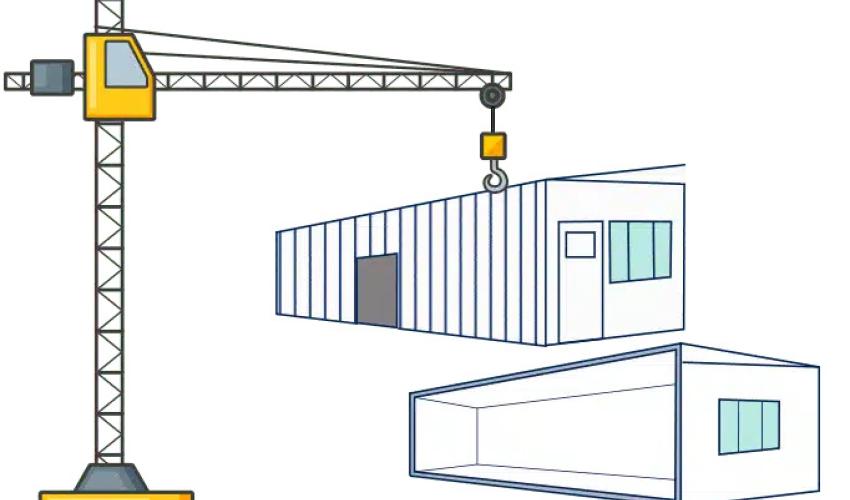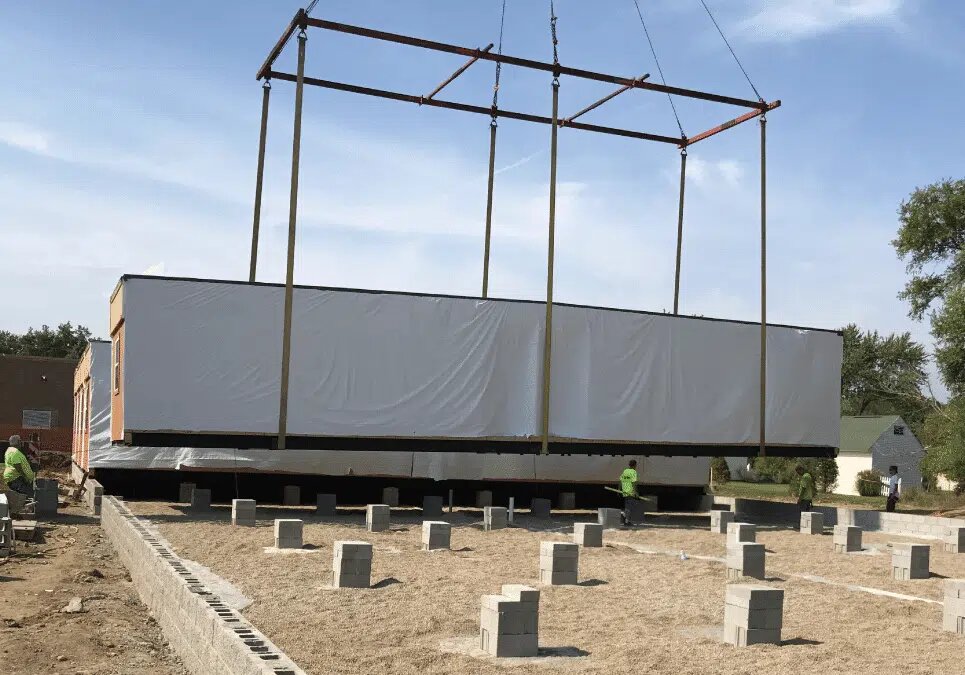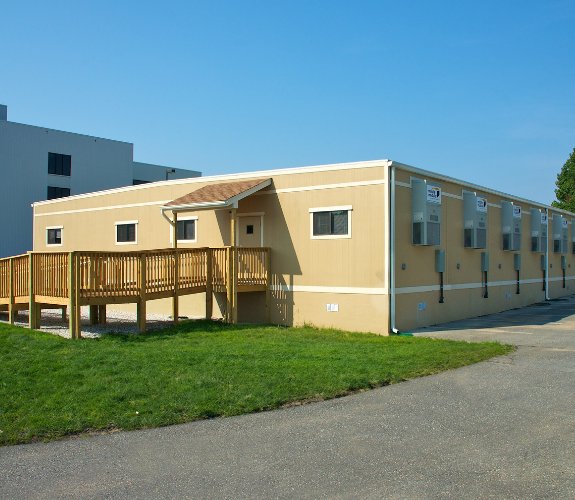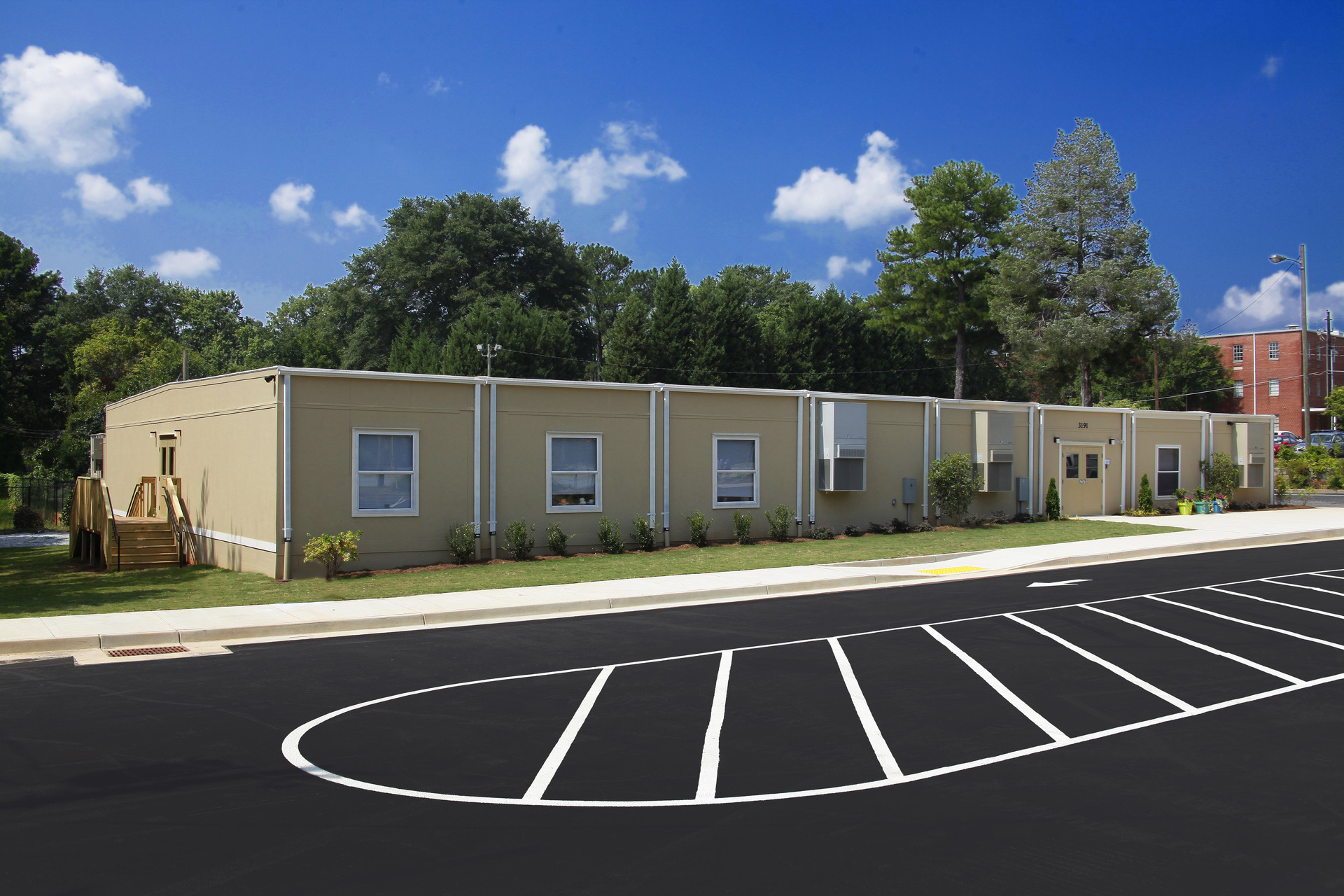How to Relocate Your Modular Classroom
Sometimes you need to move your portable classroom to another location on your campus. The advantage of modular construction is that your investment in a temporary module-based building allows you the flexibility to conveniently move your space to new site locations whenever necessary. Whether it's classroom trailers, office trailers, or any types of temporary modular buildings, the following process provides an overview of how we can assist you in relocating your building.
The Process of Relocating Your Temporary Mobile Modular Classroom
Some of the following steps will occur simultaneously to ensure efficiency in moving your portable classroom.
Step 1: Check the Weather and Clear the Area to Ensure the Safety of Students and Staff
Safety is paramount for those near the construction site and the workers relocating the modular classroom. We ensure this by monitoring the weather for any signs of severe storms or conditions that might hinder work or pose risks to the crew. The building site's perimeter is clearly marked to prevent unauthorized individuals, such as students and teaching staff, from inadvertently entering. Only professional modular construction workers should be present and equipped within the work zone.
Step 2: Remove Exterior Skirting, Decks, Ramps, and Gutters
All exterior building materials, including skirts, steps, decks, handicap-accessible ramps, gutters, and security systems, are disassembled to prevent damage during the relocation of your modular classroom. This also provides access to the building's underside.
Step 3: Shutoff and Disconnect the Portable Classroom Mechanicals and Utilities
This step involves disconnecting plumbing (sewage/water), gas lines, electrical, and other utilities for safe dismounting. We then evaluate the foundation and determine the optimal placement of jacks to load the building onto the truck trailer.
Step 4: Dismantling and Removing Interior Components Such as Sprinklers, Electrical Connections, Flooring, and Duct Work That Might Overlap With Any Seams
While most stable interior components can remain intact, we disassemble mechanical parts located at the building's seams. This includes sprinkler systems, electrical connections, flooring materials, ductwork, and security systems, ensuring the safe separation of modules for individual transport.
Step 5: Prep the Temporary Classroom’s New Site Location
Concurrently with steps 2 through 4, we ensure the new foundation is built and adequately prepared. Depending on specific requirements, soil type, drainage, and the building's intended duration at the new location, different materials might be necessary. Typically, for temporary modular classrooms, we construct a stable, raised foundation. For more permanent structures, an on-grade foundation is an option.
Step 6: Transporting and Reassembling the Mobile Classroom
With the building safely dismounted and the modules separated, we load them onto trucks and trailers for transport to the new site. Once securely placed on the new foundation, we begin reconnecting utilities and reassembling both exterior and interior components.
Some Tips and Considerations to Help Reduce the Cost of Relocating Your Temporary Mobile Modular Classroom Building
If you're contemplating relocating a previously delivered and installed building, consider the following to optimize costs:
1. Consider the Location That You Want to Move Your Building to.
The foundation type, soil conditions, tree removal, and other space conditions can influence the support type and extent required for the new site. Aim for a level area with optimal soil conditions, avoiding areas prone to water pooling.
2. Empty the Classroom or Office Space Prior to the Construction Crew Arriving.
If feasible, remove furniture and loose materials before transport. This allows the construction crew to focus on the building itself, expediting the process. If this isn't possible, the Mobile Modular team is always ready to assist.
3. Allow for Additional Space for More Temporary Buildings and Walkways.
Ensure ample space at the relocation site. Depending on spacing and foundation type, modules might be transported via truck and trailer, or a crane might be necessary. Also, consider potential future expansions, ensuring sufficient space for walkways between buildings.
Mobile Modular is Your Go-to for Temporary and Permanent Classrooms for the Upcoming School Year!
Our award-winning team has numerous portable buildings nationwide available for lease or purchase. If you require a mobile office or classroom, click "request a quote" and one of our experts will contact you promptly to initiate your modular building project.





